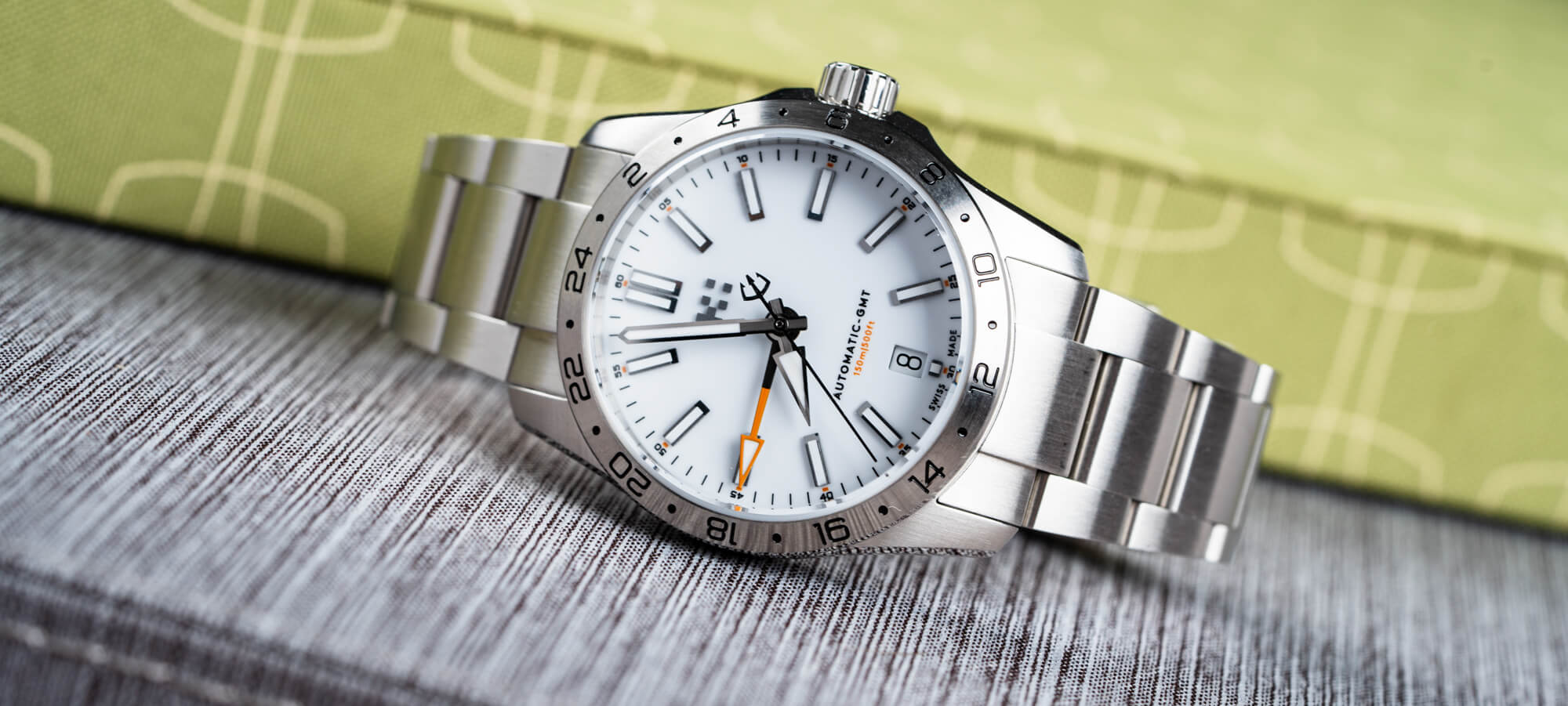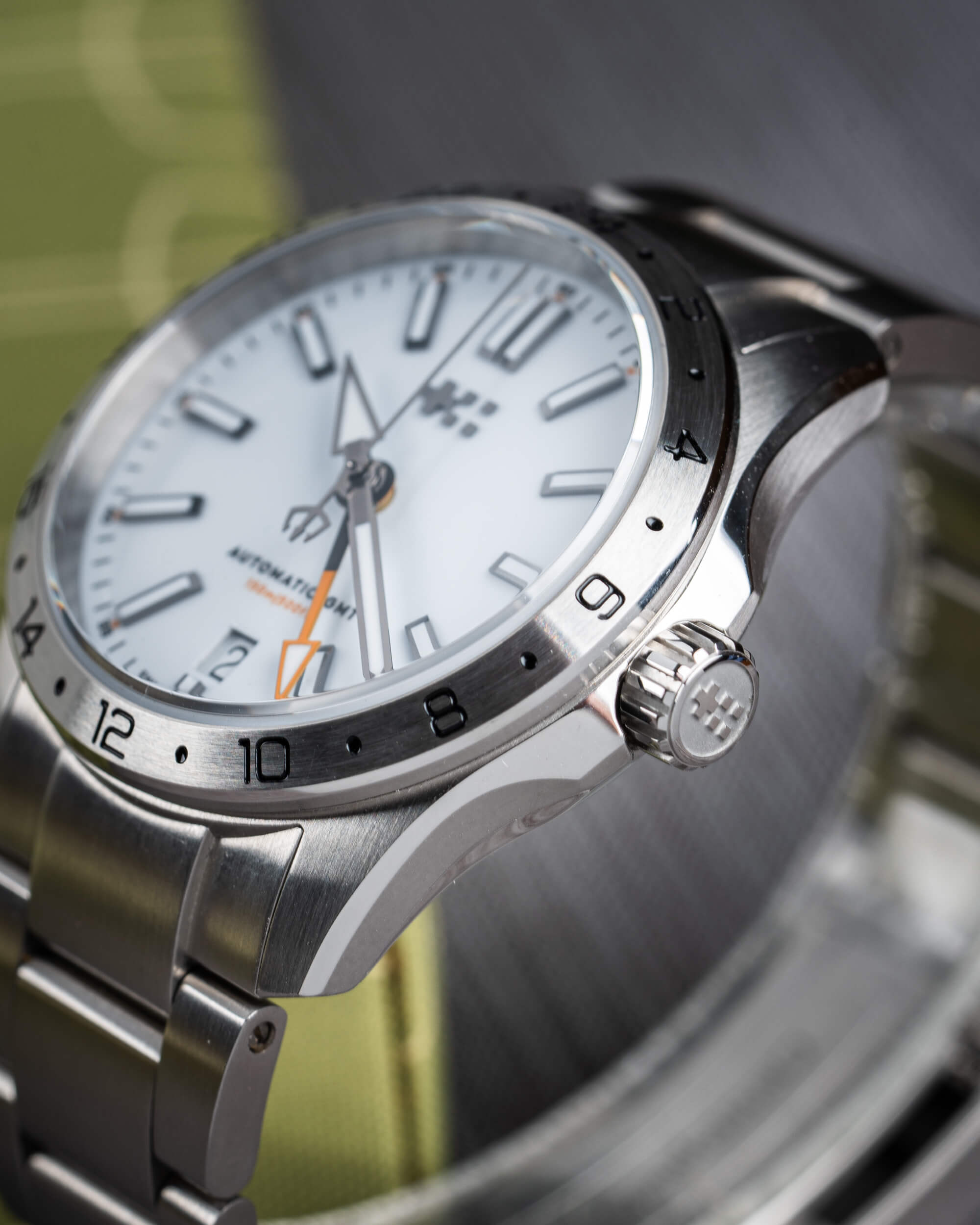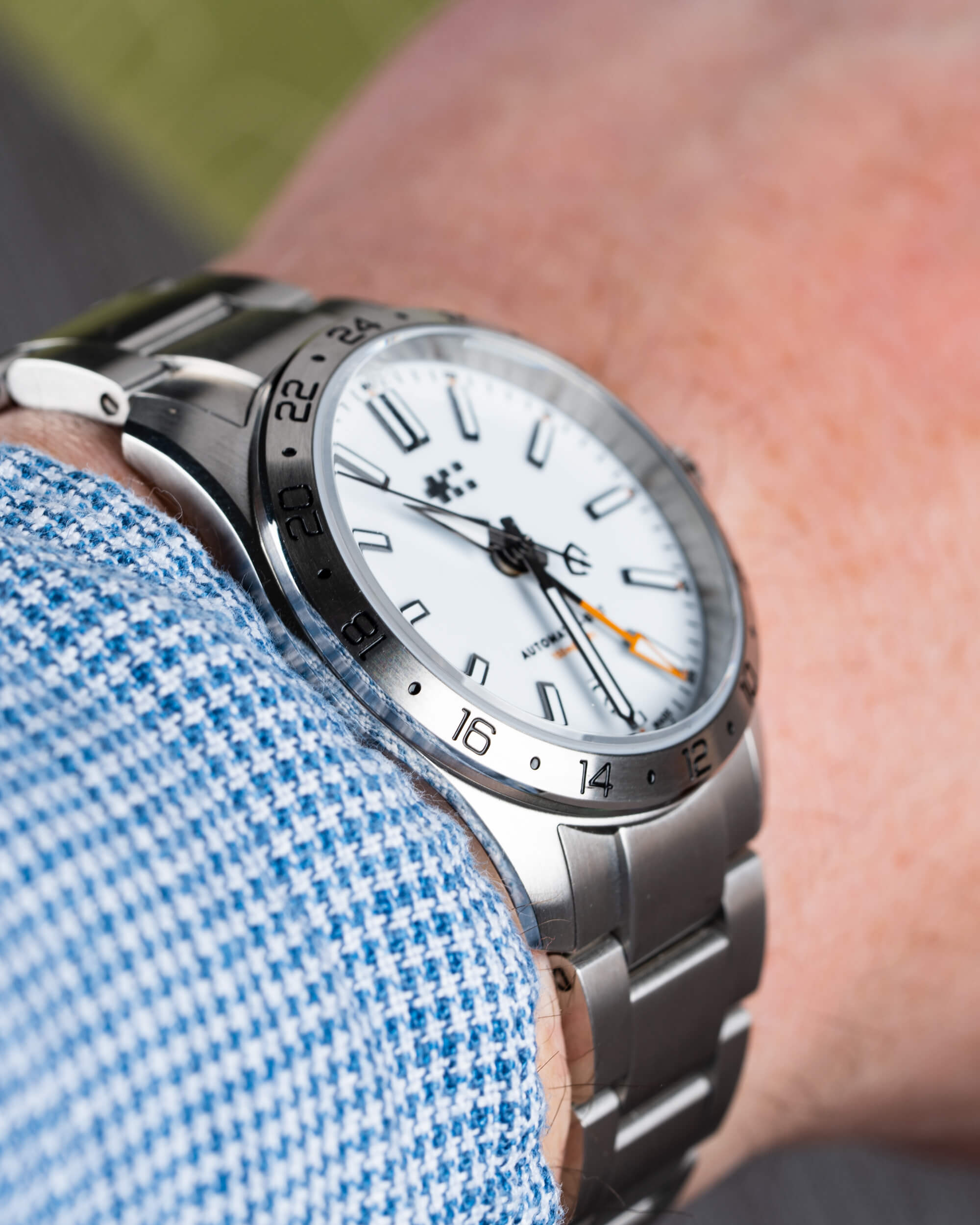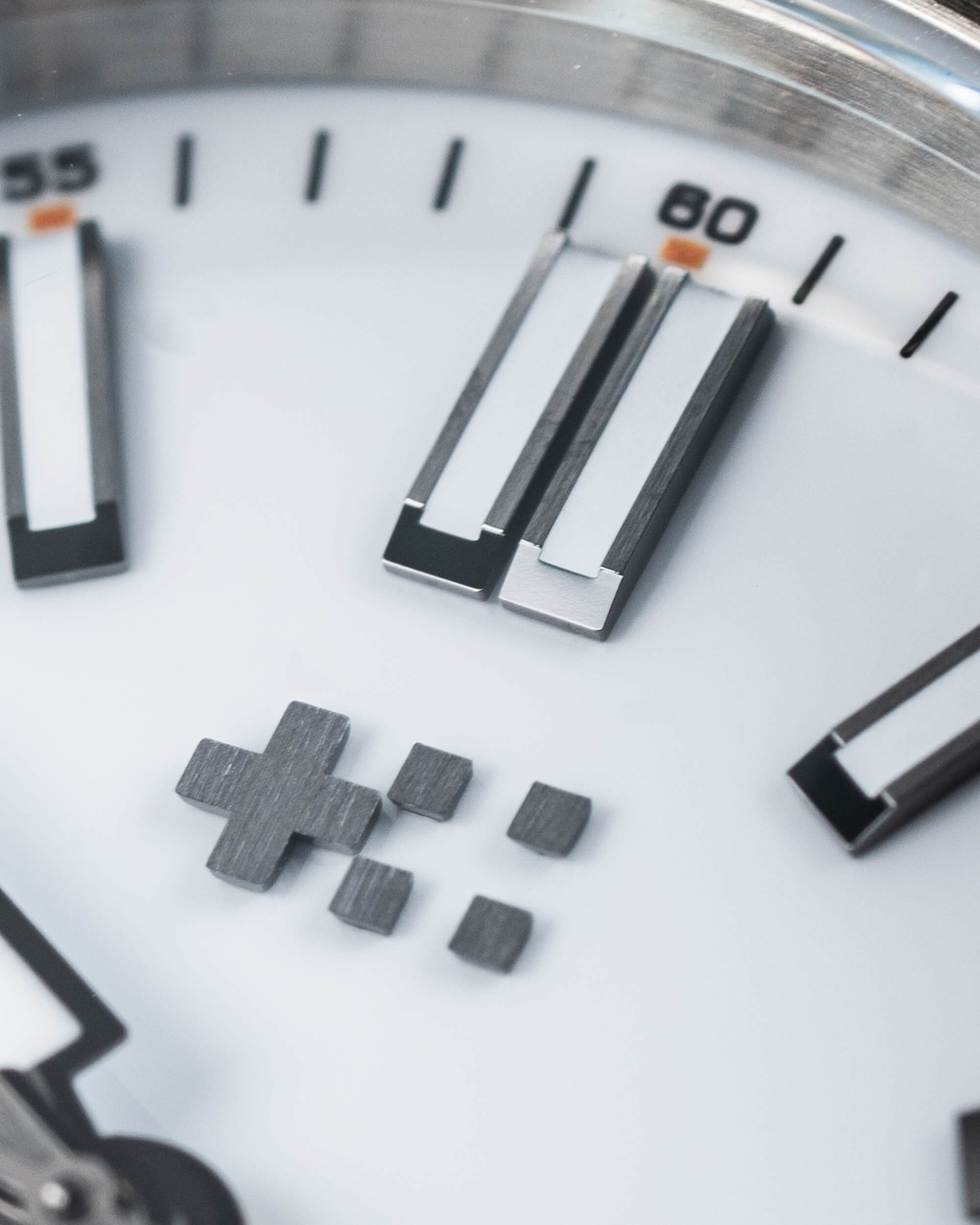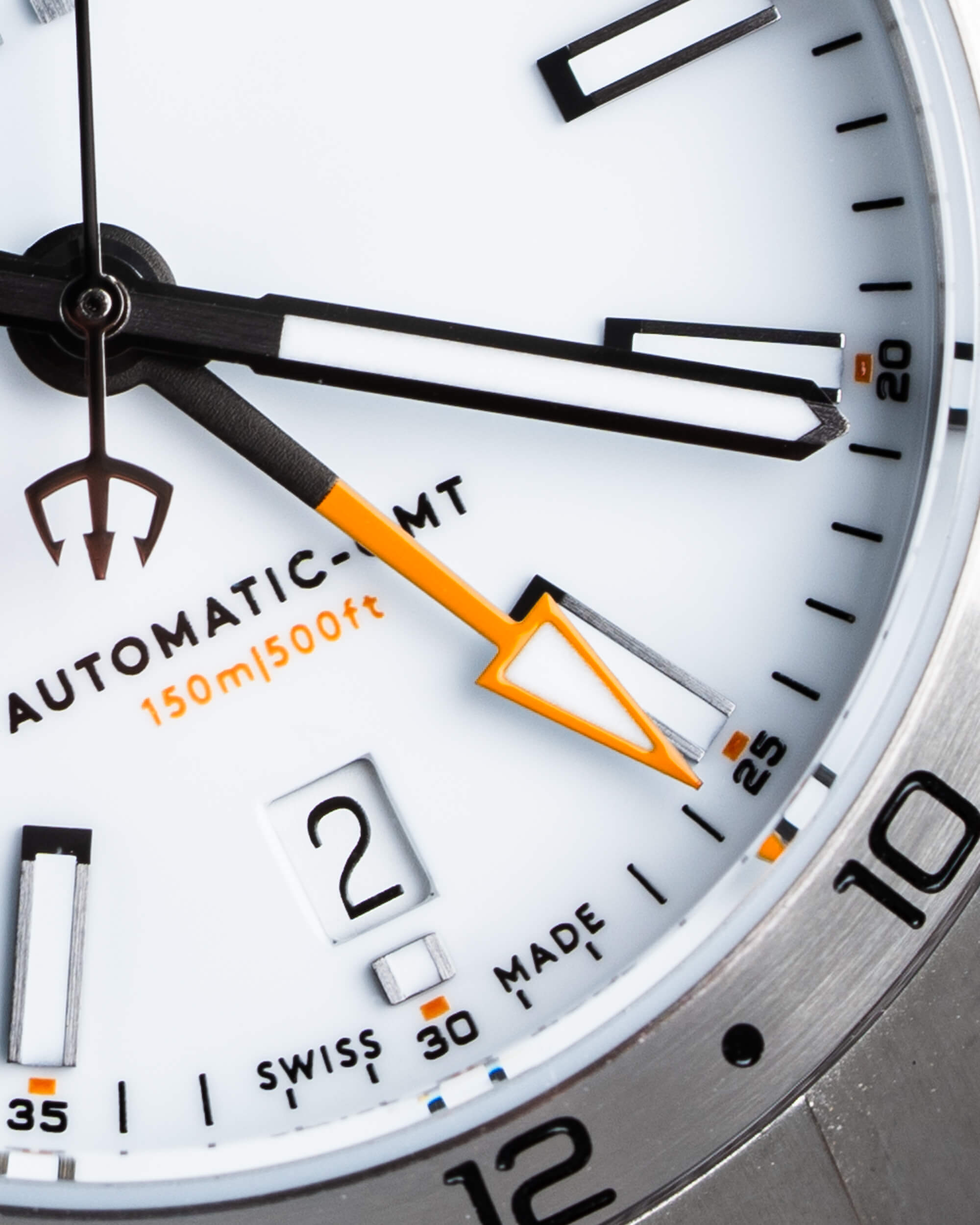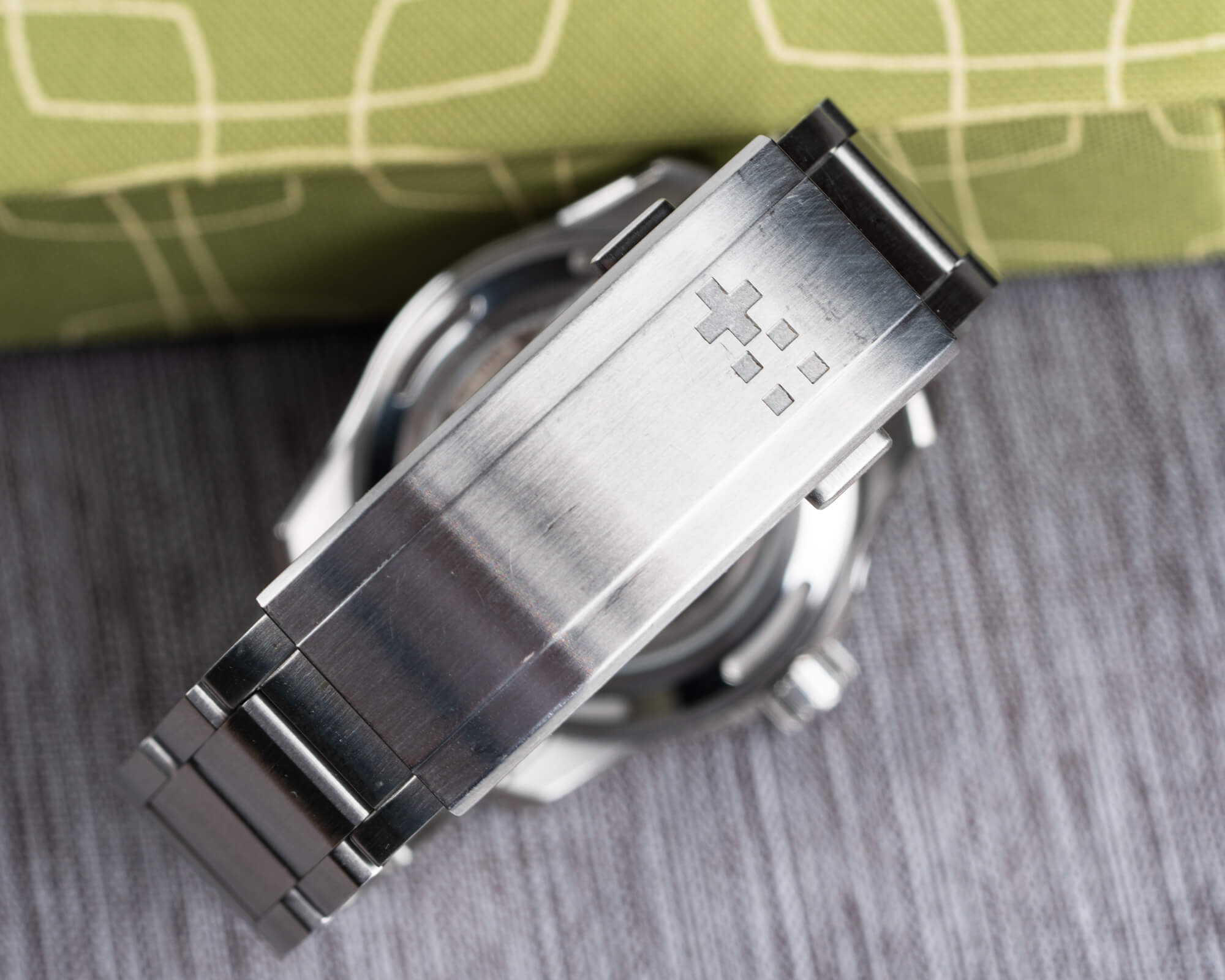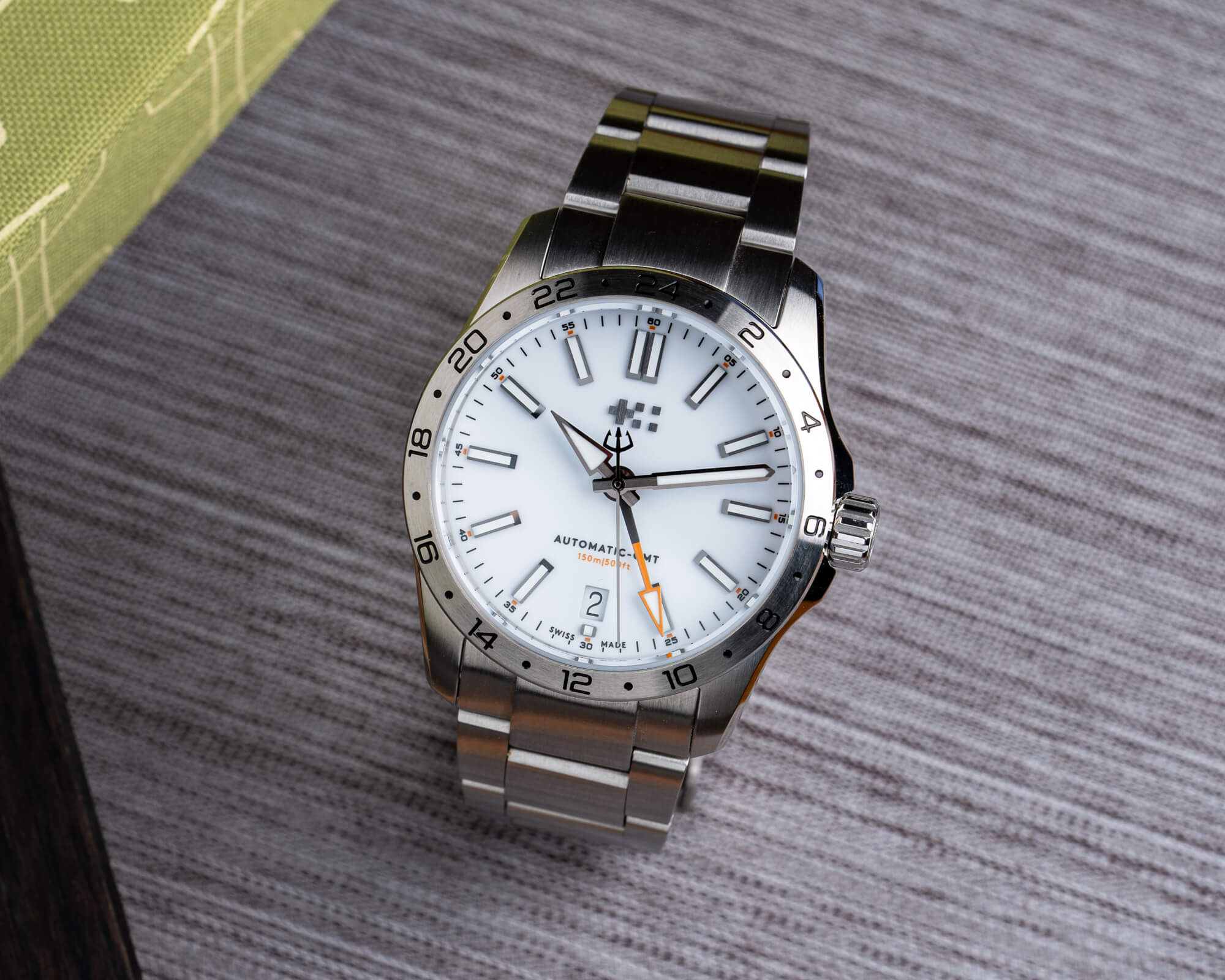
I’m here to talk to you about the smaller version of an existing watch. The recently released Christopher Ward C63 Sealander GMT 36mm is the same as the 39mm version, just trimmed down a bit. In fact, if you read our review of the 39mm C63 Sealander GMT, you really don’t even have to read this one. Just imagine that watch, with a white dial, and smaller. Yes, in the intervening two years, CW has added a few new band options, but the watches are the same price, and have the same movement, and share a design. It’s really just the size that’s changed. So, if you’re still keen, join me as I talk to you about the new (but not entirely new) Christopher Ward C63 Sealander GMT 36mm.
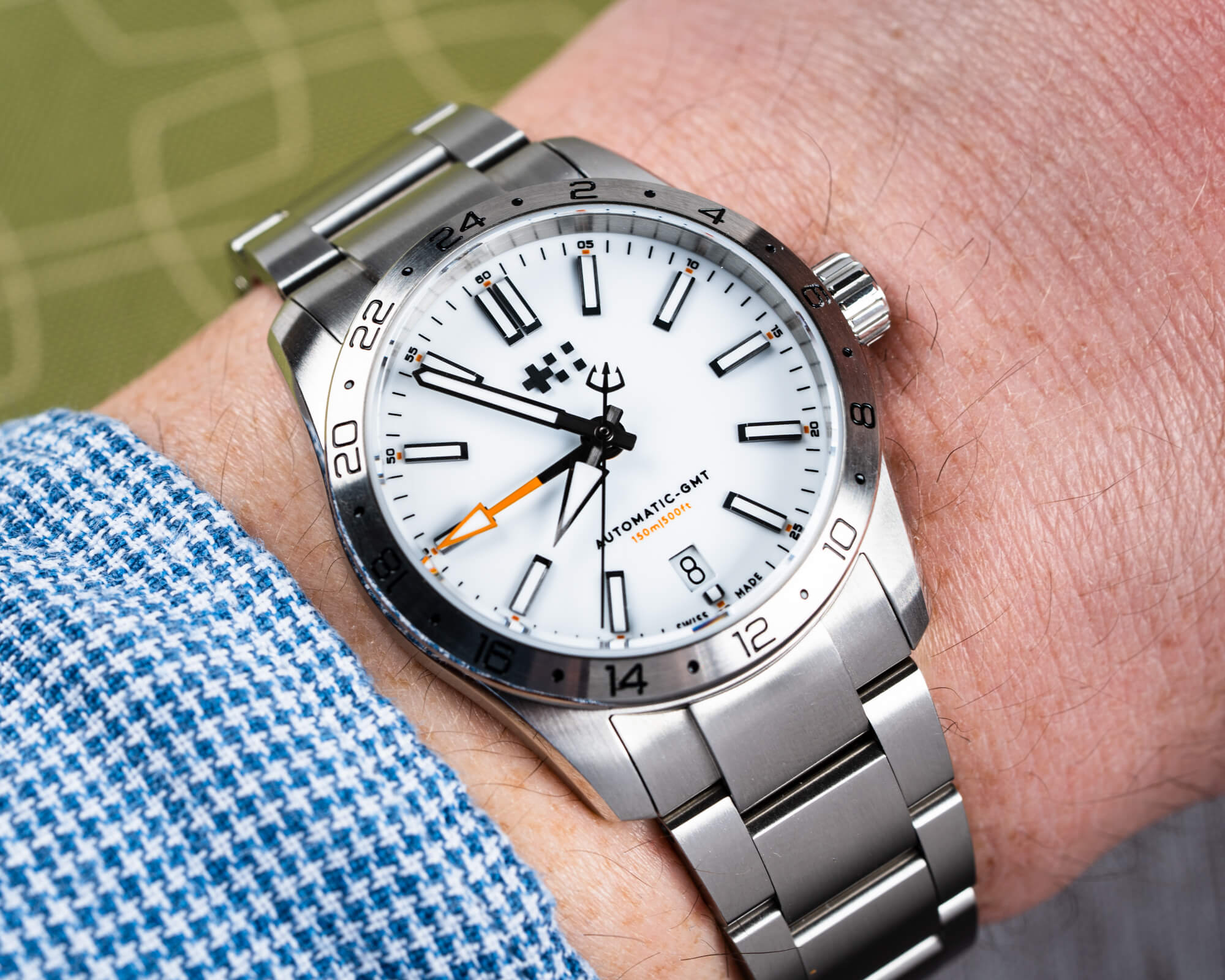
Like I said, this one’s smaller. To be exact, its dimensions average about 7% smaller: 36mm diameter vs. 39mm, 43mm lug-to-lug vs. 45.8, and 11.15mm thickness vs. 11.85mm. What strikes me as odd is the last bit, the thickness. Not because the 36mm C63 Sealander GMT is thick — it’s not, it wears quite wonderfully, as does almost every CW with the brand’s Light-catcher case. No, it’s that these watches use the same movements, and I’m wondering why the 39mm had to be 11.85mm while this model could pull off 11.15mm. And the reason is because proportions matter for water resistance. Both watches get 150m of water resistance, but achieving that depth requires different dimensions in a 36mm case than it does in a 39mm case. Thankfully, Christopher Ward has always been good at balancing the proportions of its watches: The 36mm, like the 39mm, wears easily on my 7-inch wrist. And any critics of 36mm being too small can always just size up (and if 39mm is too small, the brand also offers 41mm and 42mm GMTs).
As mentioned, the C63 Selander GMT features the brand’s Light-catcher case, which just means it has sweeping chamfers and facets that alternate between brushed and polished and almost always looks good. I’ve reviewed several models with this case design, and I’ve never been let down. The way the case curves, plus the finishing and shaping, give it a great feel on wrist and a great look at any angle. The watch is equipped with a screw-down crown and a flat sapphire crystal and comes on your choice of quick-release band: the three-link Bader bracelet, the five-link (and probably more comfortable) Consort bracelet, orange rubber, or brown leather. I’ve tried many CW bands and can say I’ve never been disappointed. The Bader that was equipped on my review model has screw links and a clasp with a built-in micro-adjustment mechanism, making sizing easy.

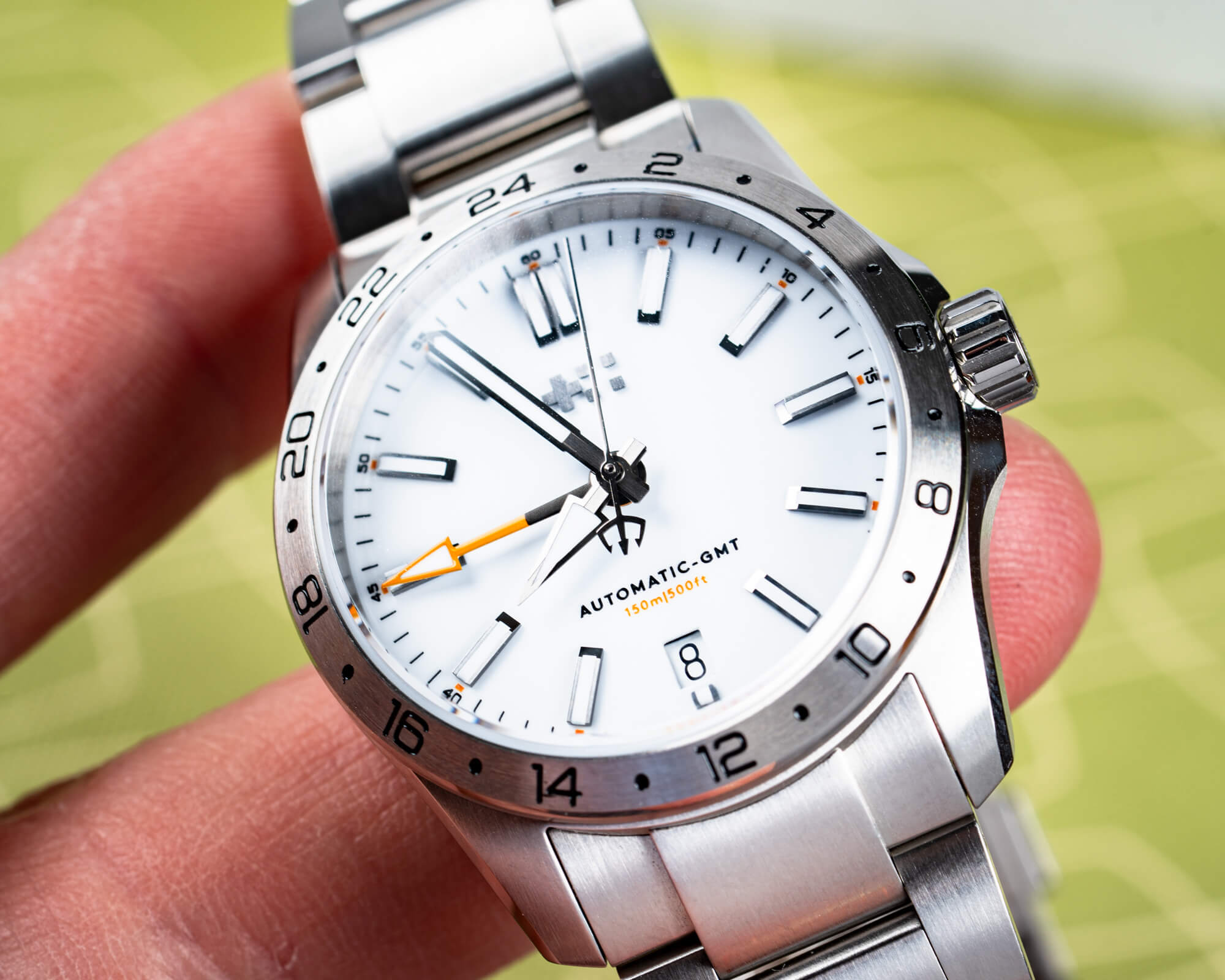
There is an inevitable and not unfair comparison that people with draw between this watch (and many GMT watches) and the Rolex Explorer II. Fixed, brushed bezel with black-filled markings, white dial, orange GMT hand. At this point, the white dial-orange GMT hand combo is so prevalent that, like the Rolex Submariner, it transcends Rolex and has become a style in and of itself. To say nothing of the fact that the Explorer II is 42mm wide and 12.5mm thick. Like almost all the other watches that get accused of imitating the Explorer II, the Christopher Ward C63 Sealander GMT (in both sizes) is an alternative for those who may want something smaller, slightly different, cheaper, or just want a watch they can actually buy. And also like all those other watches, it is very much its own watch. The Explorer II being an exemplar does not give it a monopoly.
The C63 Sealander GMT also comes in black (boring) and a brilliant blue-green called Dragonfly Blue (exciting). But those colors are also available in the 39mm, so aside from one small but important difference, the dial, too, is the same. As the models use the same movement, that single difference comes down to where the date lands, and I think the 36mm has the upper hand. On the 39mm, the top of the date window pops a bit past the arc created by the interior edge of the lumed, applied indices, whereas on the 36mm, it comes just short of the arc, staying inside an imaginary outer ring. This placement is preferable for me, visually, but I will note that it results in a smaller lume pip at 6 o’clock, which some may not like. The model gets the long arrow-baton hand combo that I don’t much like; the C65 Aquitaine appears the same but has a nicely tapered minute hand that I think pairs better. Those, too, have Super-LumiNova, and it all glows quite nicely, with good brightness and evenness.
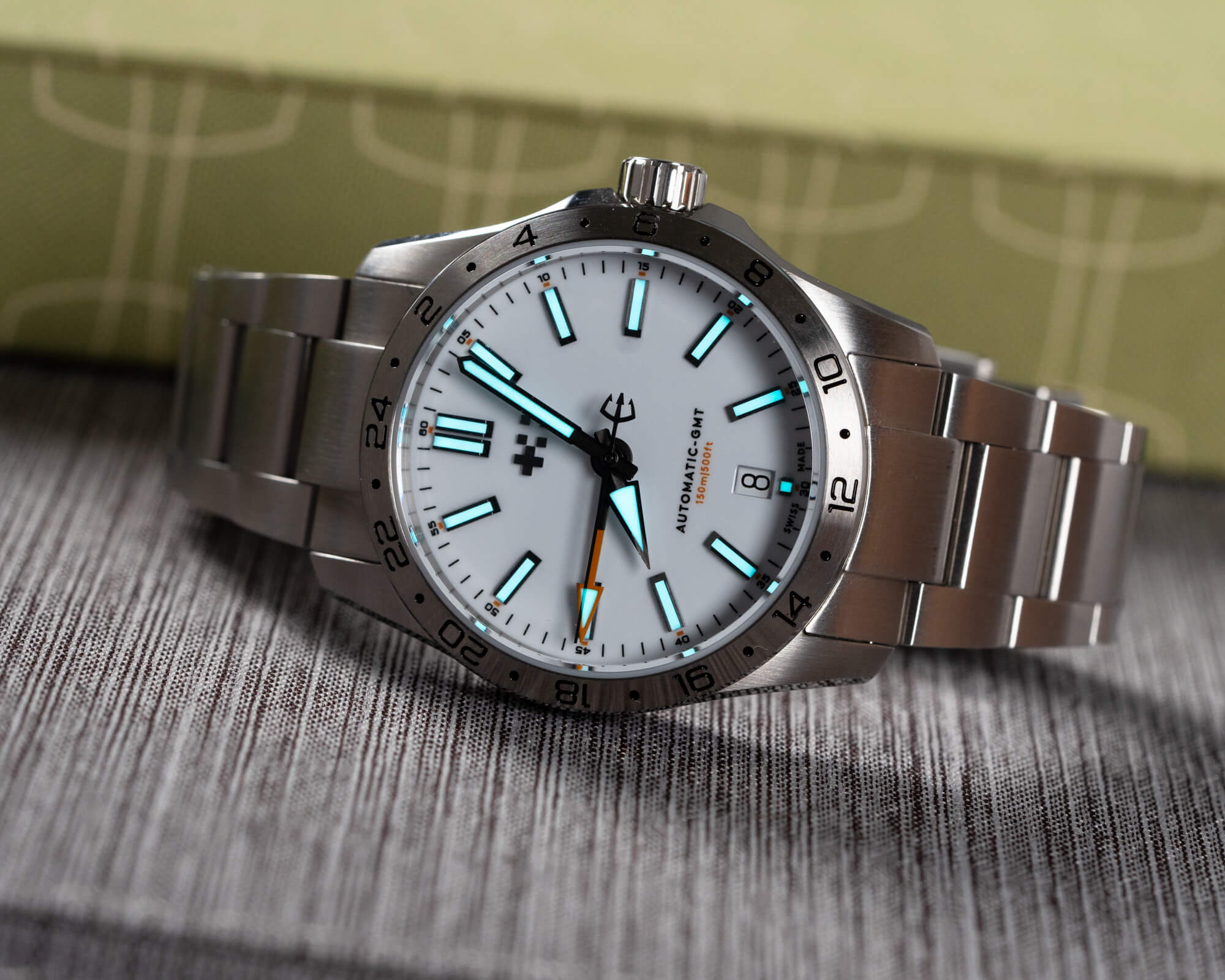

Powering the C63 Selander GMT 36mm is the automatic Swiss Sellita SW330-2 with a custom CW rotor. This remains the go-to Swiss GMT movement, even with the emergence of several alternatives. With the upgrade from a few years ago, you get a 56-hour power reserve at 28,800 vph; the brand quotes accuracy at -/+20 seconds per day, though my experience with this movement has always been better. Importantly, the SW330-2 offers caller GMT functionality: the GMT hand is set independently, but the hour hand is not (as it is in a flyer GMT). For me, given how rarely I actually engage the GMT function on any watch, this is an unimportant distinction, but for some who travel more often, can’t do quick-time math, or are pedantic about such things, it’s important to have flyer functionality.
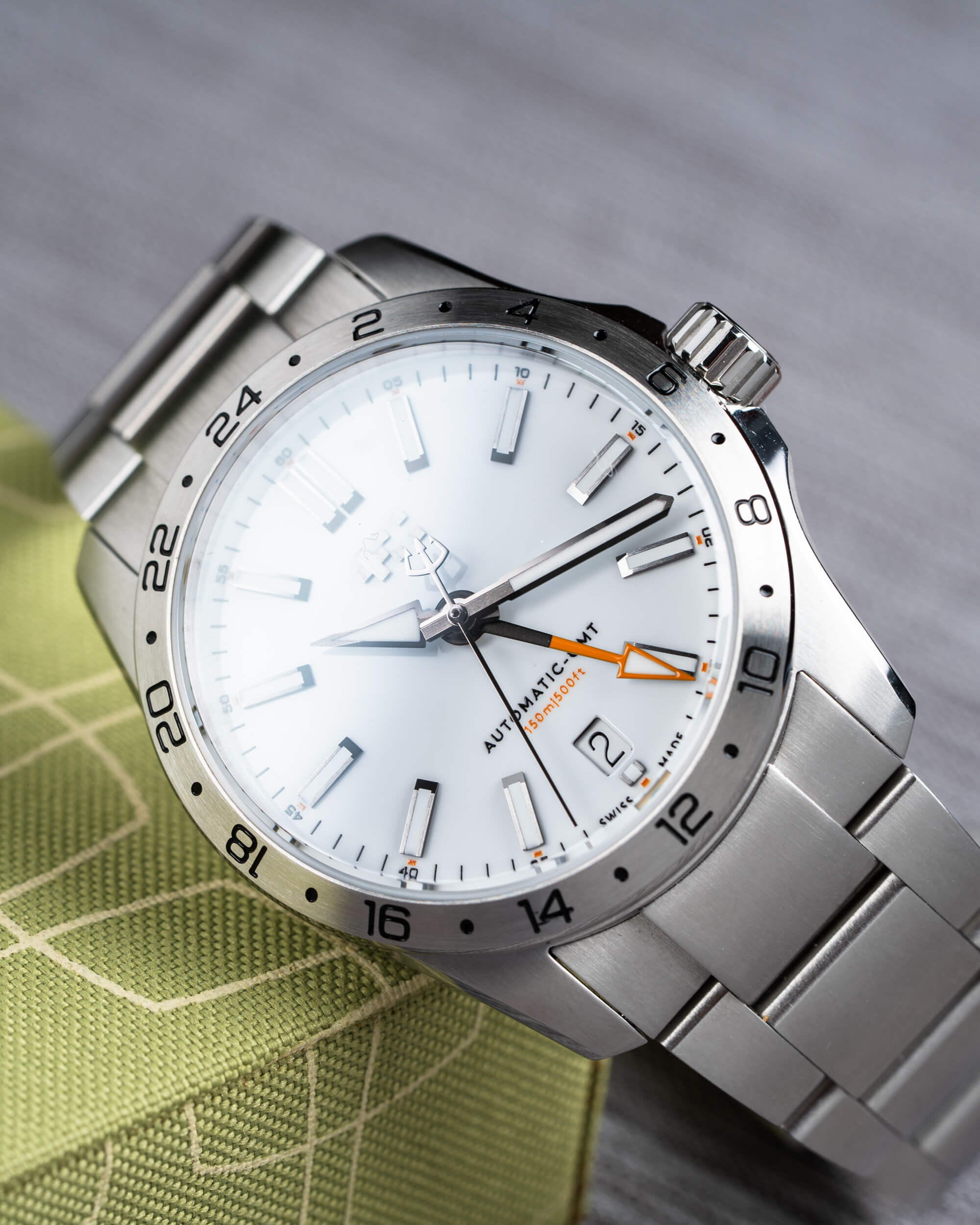
If you weren’t happy with the 39mm version of the C63 Sealander GMT and had been hoping CW would size things down for you without making any changes, you’re likely ecstatic right now. The 36mm version responds to a market that is clamoring for more reasonable, smaller models with what I assume will be the smallest case CW is going to produce. The brand isn’t messing with a design or making a watch that’s designed for small wrists; it’s just making one of its most successful models a bit smaller. The Christopher Ward C63 Sealander GMT 36mm is priced at $1,090 USD on a strap and $1,225 USD on the Bader bracelet seen here (the Consort bracelet is $50 extra). For more information, please visit the Christopher Ward website.

